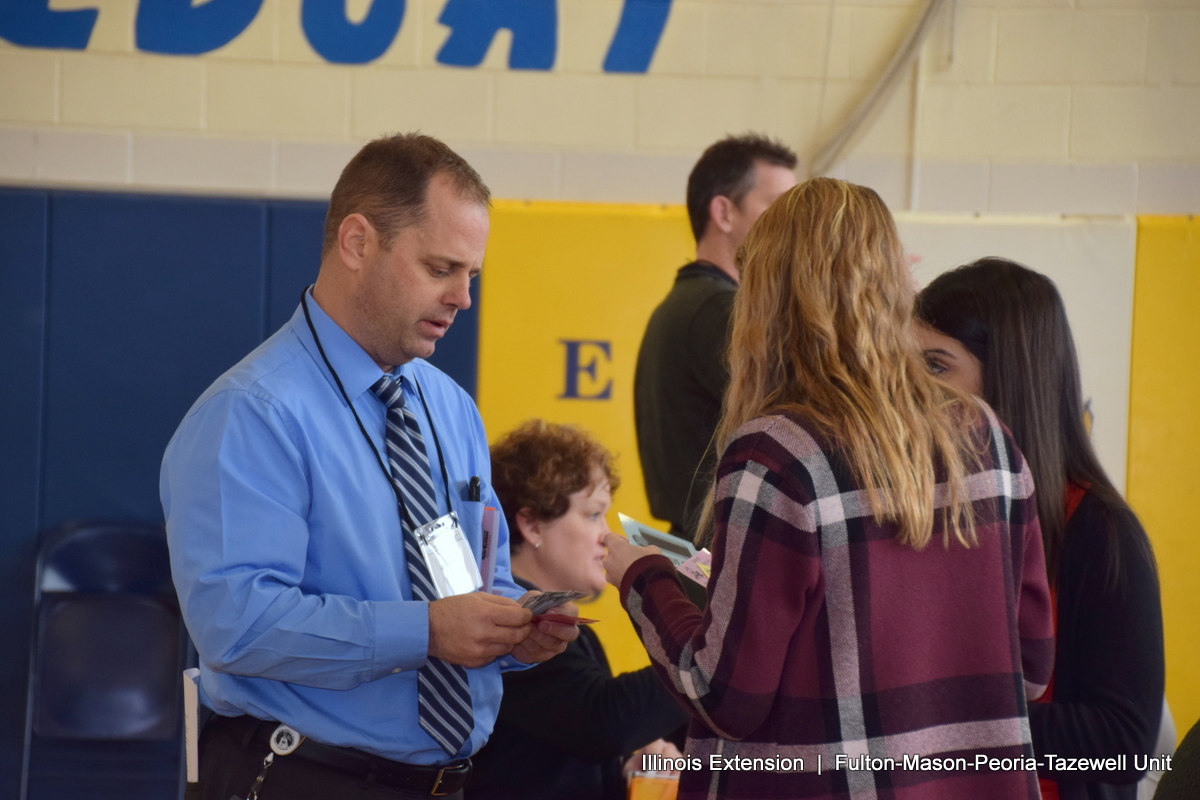For those who have never experienced poverty it is hard to imagine what is involved in navigating that day-to-day life. The stress and uncertainty play out in such ways that drastically impact high school graduation and college attendance rates for children and young adults in Illinois. University of Illinois Extension recently partnered with Dream Center Peoria and East Peoria Junior High to walk the school’s 200+ teachers and staff through a poverty simulation to help participants rethink poverty and become part of the solution.
The poverty simulation, licensed through Missouri Community Action Network, addresses the challenges of living with limited resources and an abundance of stress. Participants are assigned specific roles in a family and given real-life circumstances to work through. The role play or simulation is a powerful way to convey the real world obstacles of securing food and shelter, maintaining the family and negotiating support systems, agencies, and the real world.
“We want to bring that education and awareness and hopefully start even a deeper conversation about how teachers can respond to the issues they face on a daily basis in their classrooms,” Scott Estes, Associate Superintendent said.
Brian Uhlenhopp, Peoria Dream Center director of development, explained, “Everything we did {in this simulation} is grounded in reality.”
Throughout the simulation participants were faced with situations such as home eviction, jail time, double billing for utilities, loss of job, lack of transportation, and enticement into criminal behaviors in order to survive.
“It is difficult to see how rampant crime is,” commented Uhlenhopp in the debriefing session. “Anyone who engaged in crime here, did not because they were bad people. You all started off as good people. It is that pressure and the situation you are in that crime became the best alternative. If you encounter kids that are acting out it is not an issue of character a lot of times. It is the environment, it is the pressure. There is good news there.”
Many of the EPJH staff went through the simulation in the role of children and teenagers. When asked to describe their emotions as they went through the simulation they used works like shear panic, helpless, anxious, lost, alone, and overwhelmed.
Another participant shared, “I was a disabled grandma and I felt like I still needed to get out and help pay the bills. It felt panicky, frustrating, and scary.”
During the event debriefing and in follow-up, ongoing conversations at the junior high the staff have identified action steps they can take individually and as a team to help address the needs of their students living in poverty. Some items mentioned included don’t make assumptions of parents, think about homework policy, follow through on resource assistance, make community resource information available at school and school events, utilize the lunchroom televisions to help students connect with specific staff members who can connect them with additional resources.
“Bottom line, when Dream Center goes through something like this the things that jump out at us are #1 kids are the ones falling through the cracks,” shared Uhlenhopp. “Number two, poverty is less of a resource issue and more of a mindset issue. There were enough resources in the room to lift everyone up, but the pressure caused people to not find the resources and they just didn’t know. And #3 relationship is even more powerful to get out {of poverty} then resources alone.”
Nancy Ouedraogo, Extension community and economic development specialist, has facilitated many poverty simulations throughout the state. “We have seen new initiatives to serve low-income families, such as a back-to-school backpack drive, and new policies around communications and services for low-income families come out of people’s experiences in the poverty simulation.”
A few weeks following the event, Estes stated that the EPJH school principals reported both formal and informal conversations about the experience and action steps needed are happening and will continue.
